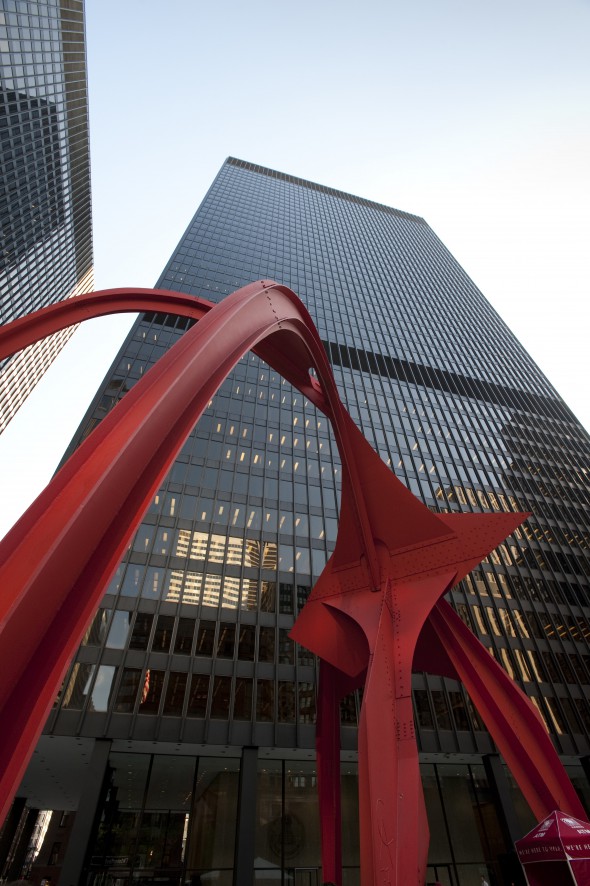No Less True: Mies vs Modular

View from Below the Eiffel Tower Paris, France
In the early days of iron and steel, these new building materials were seen as a practical solution to building issues, not aesthetic ones. Steel was something structural and capital engineers embraced early because it solved a building size and economic problem. Engineers like Gustav Eiffel learned early on how to exploit metal for long spans, primarily in bridges. When Eiffel turned a bridge 90 degrees and created the Eiffel Tower he opened a lot of eyes to the architectural expression steel can take. Yet, it took a couple more decades before Ludwig Mies van der Rohe came along and figured out how to make poetry and architecture out of steel.
Mies gave us great insight into his way of thinking when he said:
“This is no less true of steel and concrete than of wood, brick and stone. We must remember that everything depends on how we use a material, not on the material itself. New materials are not necessarily superior. Each material is only what we make it.”
Modular and off-site construction have been around for many decades now solving only practical problems. If Mies found himself in our time he might say:

Kluczynski Federal Building; Mies van der Rohe
“This is no less true of off-site construction than of on-site construction. We must remember that everything depends on how we use a method of construction, not on the method itself. New methods are not necessarily superior. Each method is only what we make it.”
It is time to thank the engineers for developing modular and off-site methods, but now it is also time for poetry and architecture in modular and off-site construction to emerge.
Architecture +
© Miletus Group, Inc. 2011
Is Modular Design Really Greener? Exploring Construction Waste Reduction.

© James B Guthrie, AIA 2011
Yes, there is no question that modular construction is greener. Take the example of construction waste – off-site methods are far more efficient in terms of construction waste reduction than on-site construction.
Here is one example; many on-site contractors will include up to a 10% material contingency in their projects to cover, among other things, damage from weather and trades damages during construction. Because on-site contractors do not normally store excess materials for future jobs, even if there were no damages, this 10% contingency winds up in the waste stream.
Off-site factories are naturally more efficient with their materials. At Miletus Group we own our own modular factory. When we calculate materials for a job we use a factor of 0% percent for weather and trades damages to materials. This makes our overall waste stream very small. Because our facility is organized and weather tight, it is very easy for us to handle materials and waste. Throughout our facility we have separate bins for various construction materials that we can not use again. This means recycling is easy for us and we wind up recycling over 95% of the limited waste we do generate. Very little of our construction material winds up in the landfill. It would be great if on-site builders could make similar claims, but it is highly improbable that on-site construction could ever meet these numbers due to the very nature of the environment in which they work.
Visit AIA’s new KnowledgeNet Modular and Prefabricated Architecture group. There are a couple of documents from the UK on this very subject. They are a few years ahead of us on this issue. It is good reading.
If anyone reading this has further data to support the efficiencies of off-site construction, please do feel free to let us know directly and we will post it.
© Miletus Group, Inc. 2011
Welcome
Welcome to the new Miletus: Architecture + blog.
We hope to have many interesting posts in the near future, but let’s start with a bit of wisdom that ties our name, our profession, our approach and our banner altogether in one guiding thought:
“A society grows great when old men plant trees whose shade they know they shall never sit in.”
– Ancient Greek Proverb
© Miletus Group, Inc. 2011

